The popularity of asparagus continues to grow daily due to its exquisite taste and health benefits. There are three main varieties: green, white, and purple. White asparagus is often considered the finest in terms of flavour. Let’s explore its benefits, cultivation techniques, and potential drawbacks.
Table of contents
What Is White Asparagus?
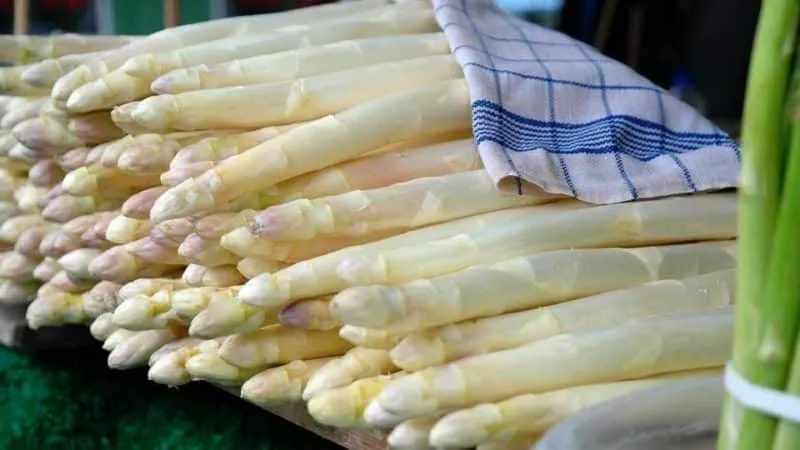
The first mentions of white asparagus date back to ancient Egypt, over 4,000 years ago. At some point, European royalty developed a taste for it. For a long time, asparagus was considered an aristocratic delicacy, but gradually it became part of everyday diets. Today, its popularity is steadily increasing across Europe.
White asparagus (asparagus officinalis) is a frost-resistant dioecious plant. It flowers in its second year, eventually producing small red berries. Mature plants have a robust root system, with new roots forming around each shoot. Under favourable conditions, asparagus can live for 20–25 years. Only young shoots, up to 12 cm long, are harvested for consumption.
How It Differs from Green Asparagus and Why It’s White
The colour of asparagus depends on its growth stage. White shoots are the youngest, growing underground—tender and mild in flavour. Once they break through the soil and are exposed to sunlight, they develop a purple or lilac hue, eventually turning green. While some believe harvesting should only happen at this stage, asparagus remains edible throughout its growth.
See how white asparagus grows in the photo below.
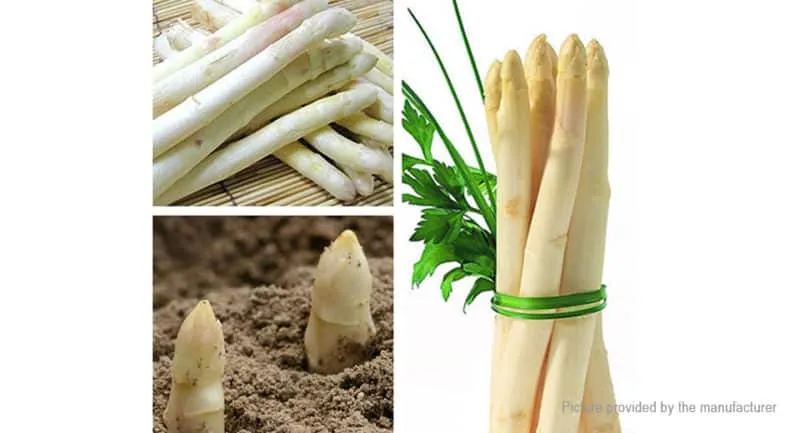
Nutritional Profile: Vitamins and Minerals
Asparagus boasts a rich nutritional composition, packed with essential vitamins and minerals.
Vitamins:
- Vitamin PP — 1 mg;
- Beta-carotene — 0.5 mg;
- Vitamin A (RE) — 83 µg;
- Vitamin B1 (thiamine) — 0.1 mg;
- Vitamin B2 (riboflavin) — 0.1 mg;
- Vitamin C — 20 mg;
- Vitamin E (TE) — 2 mg;
- Vitamin PP (niacin equivalent) — 1.4 mg.
Macroelements:
- Calcium — 21 mg;
- Magnesium — 20 mg;
- Sodium — 2 mg;
- Potassium — 196 mg;
- Phosphorus — 62 mg.
Microelements:
- Iron — 0.9 mg;
- Copper — 0.17 mg;
- Manganese — 0.15 mg;
- Selenium — 6.1 µg;
- Fluoride — 21.9 µg;
- Zinc — 0.6 mg.
Caloric Value and Macronutrients
This vegetable is ideal for low-calorie diets, containing just 20 kcal per 100 g.
Macronutrient breakdown:
- Protein — 1.9 g;
- Fat — 0.1 g;
- Carbohydrates — 3.1 g.
Health Benefits
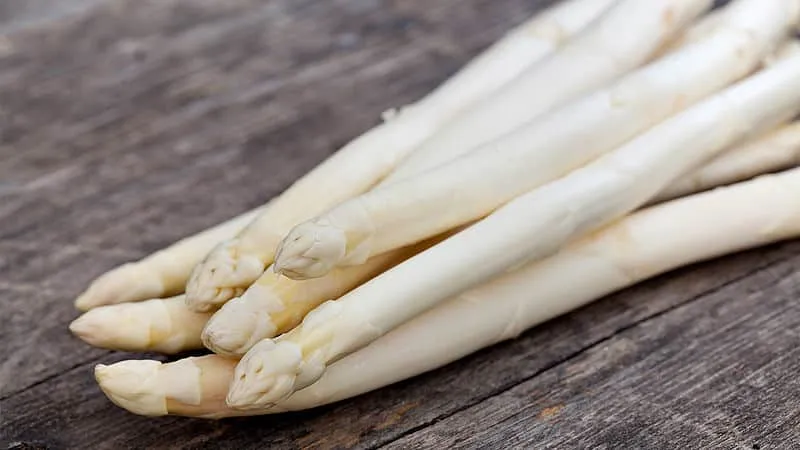
Asparagus offers numerous health advantages:
- Low-calorie, making it perfect for balanced and weight-loss diets;
- Helps eliminate excess fluids from the body;
- Supports cardiovascular health due to its asparagine content;
- Promotes healthy digestion;
- Enhances male fertility;
- Strengthens bones and connective tissue, ideal for children’s diets;
- Regulates cholesterol levels;
- Recommended during pregnancy for foetal development.
Growing White Asparagus
To ensure a good harvest, follow proper planting and care techniques. Asparagus can be grown from seeds or seedlings, with the latter being more reliable.
Best Time to Plant
Since seeds take a long time to germinate, seedlings should be prepared in advance, starting from mid-March.
Seed Preparation
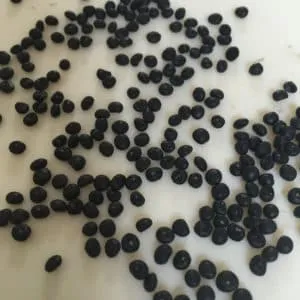
First, discard any damaged seeds. Inspect them and remove any that show signs of rot or mould. Soak the seeds in water—viable ones will sink, while infertile ones float.
Soak selected seeds in warm water with a growth stimulant (such as a weak potassium permanganate solution, "Epibrassinolide," or "Seaweed Extract") for 2–3 days. Keep them in a warm place, changing the water twice daily. Then, wrap the swollen seeds in a damp cloth and store them for 5–7 days until sprouts (1–3 mm) appear.
Container Preparation
Use seedling trays or 100–200 ml plastic cups (with drainage holes) for planting.
Soil Requirements
Asparagus thrives in loose, well-draining soil. A mix of garden soil, compost, peat, and sand in equal parts works best.
Sowing in Containers
Plant seeds 2 cm deep. Place one seed per cup or space them 5–6 cm apart in trays. Keep containers in sunlight at around +25°C, watering daily. Once sprouts emerge, cover them lightly with peat and reduce temperature to +20°C. Fertilise after two weeks, and aerate the soil before each watering. Rotate containers daily for even growth.
Important! Harden seedlings before transplanting. Gradually expose them to outdoor conditions, starting with 30–60 minutes and increasing to 12 hours.
Transplanting
If using trays, transplant seedlings once they reach 15 cm. Trim roots slightly and space plants 10 cm apart.
Site Preparation
Since asparagus is perennial, selecting the right location is crucial:
- Choose a sunny, wind-protected spot;
- Avoid waterlogged areas—water table should be at least 1.5 m deep;
- Clear weeds and debris;
- In autumn, dig the soil and enrich it with compost (15–20 kg per m²), potassium sulphate (40 g per m²), and superphosphate (70 g per m²);
- In early spring, rake the soil and apply ammonium nitrate (20 g per m²) and wood ash (60 g per m²) to eliminate pests and pathogens.
Transplanting Seedlings Outdoors
Follow these steps for successful transplanting:
- Move seedlings outdoors once they reach 15 cm.
- Plant between late April and early June, depending on local climate.
- Dig holes 30 cm deep and 40 cm wide, spaced 50–60 cm apart.
- Loosen the bottom of each hole to 20 cm.
- Form a small mound of loose soil at the base.
- Trim roots by 4 cm and place seedlings atop the mound.
- Fill holes, firm the soil, and water.
- Once water is absorbed, cover with dry soil.
- Raise beds to 6–8 cm initially, increasing to 60 cm the following year.
Cultivation Tips
Asparagus care involves simple but consistent practices.
Watering
Water frequently but moderately, using warm water. Avoid waterlogging to prevent root rot.
Note: During droughts, ensure soil doesn’t dry completely—otherwise, shoots become tough and bitter.
Fertilisation
Feed asparagus regularly:
- One month after transplanting, water with diluted manure (1 kg per 5–6 L water).
- After harvest (late June), apply urea, potassium salt, and superphosphate (30 g per m² each).
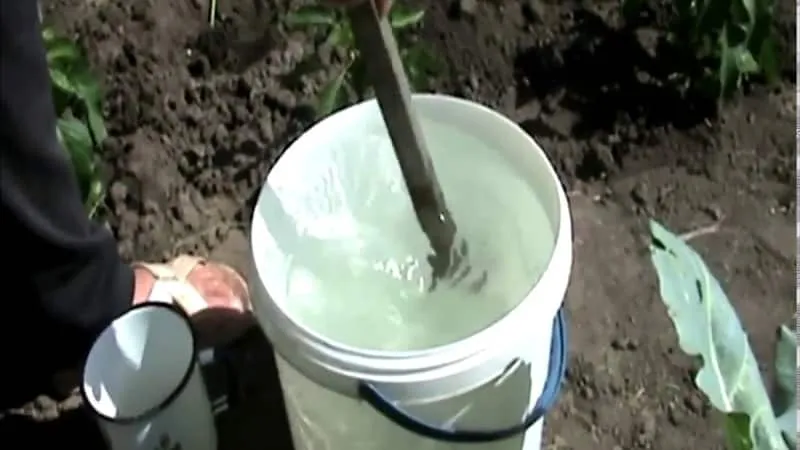
- In early July, use organic fertilisers like chicken manure (1 kg per 10 L water).
- Before frost, reapply potassium salt and superphosphate.
Weeding and Aeration
Loosen soil after each watering or rainfall (8–10 times per season). Weed every two weeks to prevent disease.
Pest and Disease Control
Common asparagus ailments:
- Root Rot. Preventable with proper drainage. Treat minor cases with "Tebuconazole" (10 g per 10 L water). Remove severely affected plants.
- Rust. Caused by excess moisture. Remove infected shoots and spray with "Azoxystrobin" and "Bacillus subtilis."
- Stemphylium Leaf Spot. Manifests as brown-red lesions. Treat with "Tebuconazole."
- Cercospora Blight. Grey spots with dark edges. Remove diseased shoots and apply fungicide.
- Asparagus Beetles. Larvae infest young shoots. Remove affected stems and till soil in autumn.
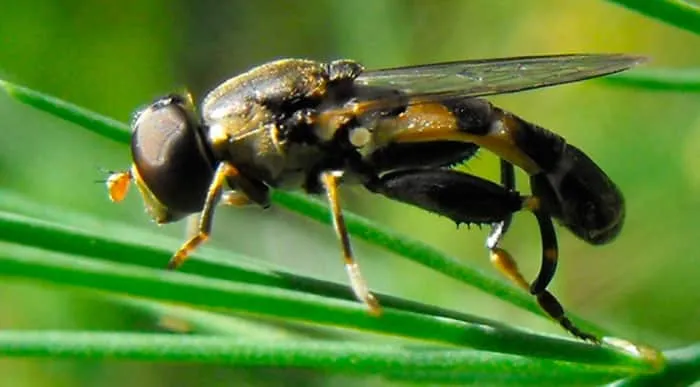
Asparagus beetles - Asparagus Leaf Miner. Damages foliage. Handpick beetles or use "Malathion" post-harvest.
- Scale Insects. Attack leaves, causing withering. Treat with "Malathion."
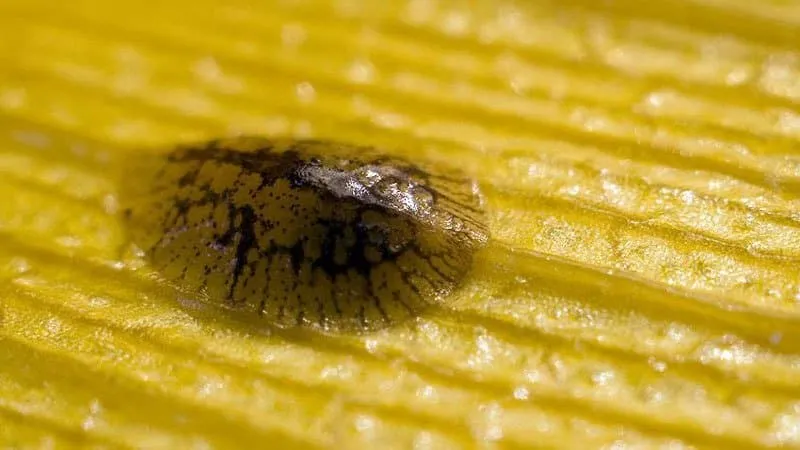
Scale insects - Asparagus Crioceris. Feeds on shoots. Use "Thiacloprid," "Thiamethoxam," or "Lambda-cyhalothrin."
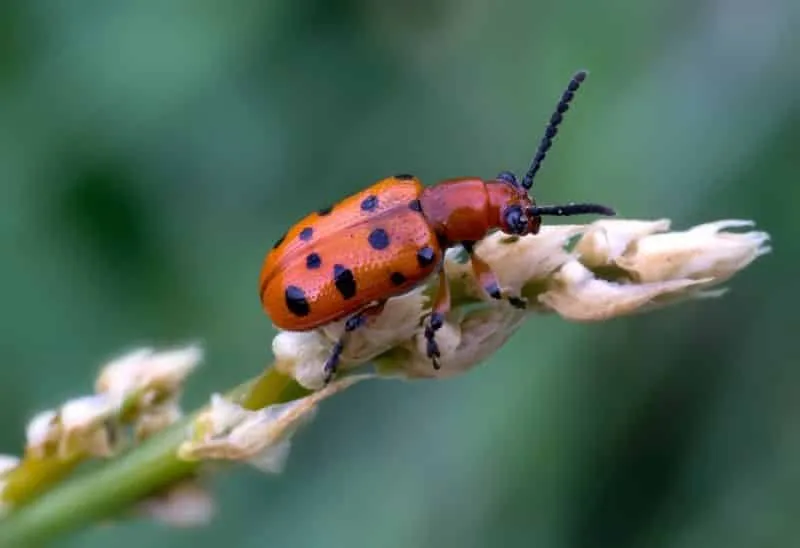
Asparagus Crioceris
For prevention, spray plants with "Imidacloprid" (2 ml per 5 L water) during flowering.
Harvesting and Storage
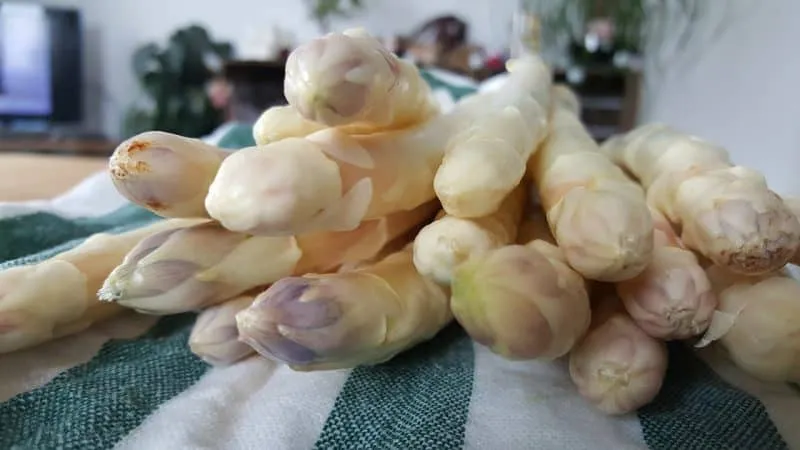
Harvest white asparagus in its third year:
- Collect from April to June.
- Look for cracked soil—gently dig to find shoots and cut them 2–3 cm above the base.
- Refill holes and water.
- Harvest every 2–3 days over a month.
- In the third year, take up to five shoots; later, up to 15.
- Pick in early morning or evening to prevent discolouration.
- Store in darkness at ≤ +3°C, wrapped in damp cloth.
- Consume within 3–4 days—asparagus wilts quickly.
Potential Risks and Contraindications
White asparagus may trigger allergies, so introduce it cautiously.
Avoid if you have:
- Diabetes;
- Rheumatism;
- Kidney stones;
- Cystitis.
Conclusion
With its delicate flavour and nutritional richness, asparagus is a valuable addition to healthy diets. Seedling cultivation is recommended, though direct sowing works in warmer climates. Harvest begins in the third year.
Consistent watering, feeding, and pest control ensure a thriving crop. Regular weeding and soil care prevent most diseases, making asparagus a rewarding long-term garden investment.







